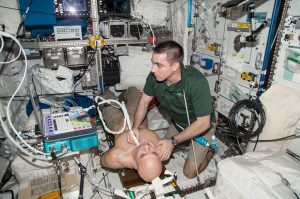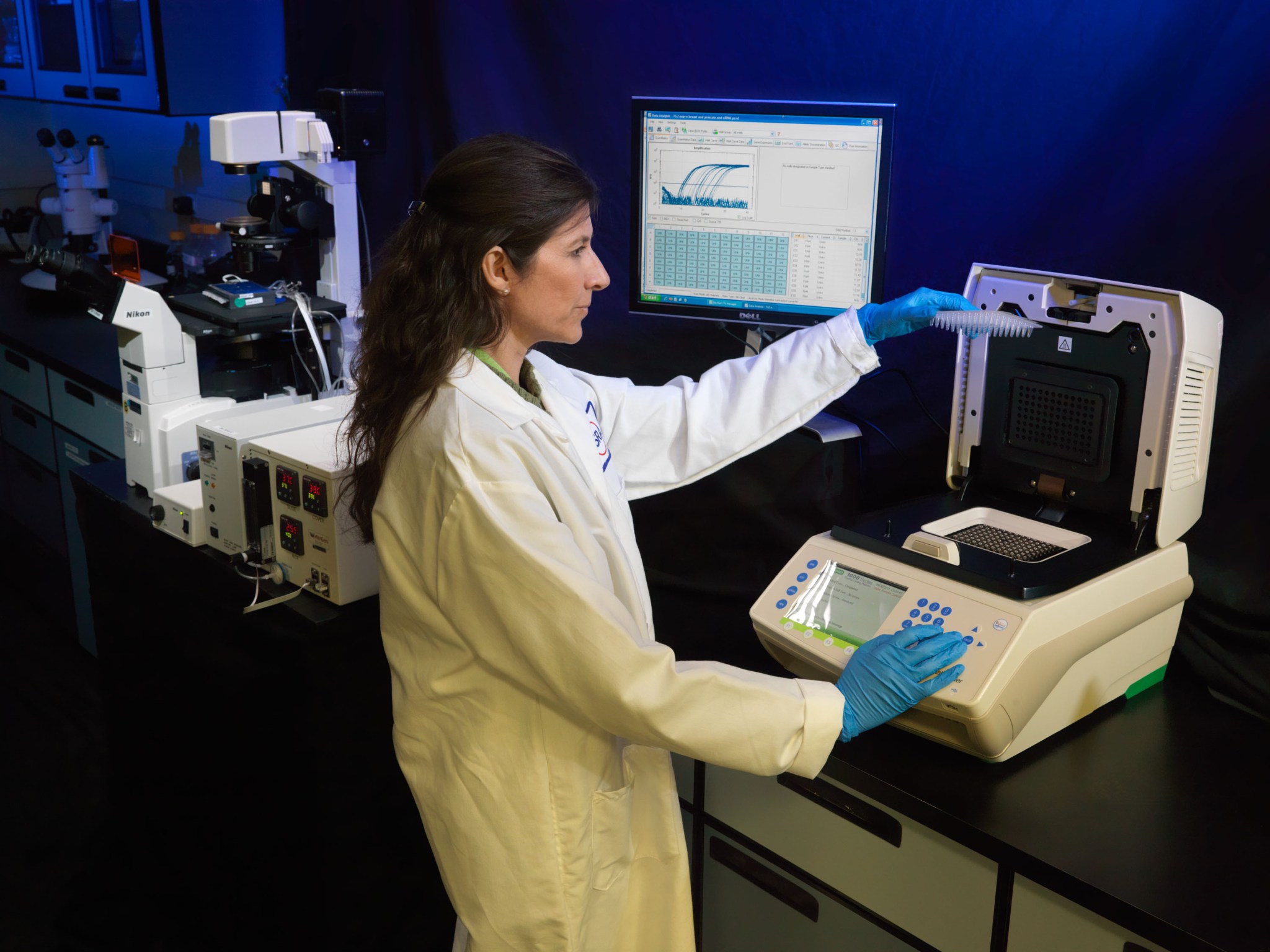
Laboratory Testing
MER1001 Hematology (annually)
Tests: Complete Blood Count – hemoglobin, hematocrit, red blood cell count, red blood cell indices, white blood cell count, differential count, platelet count.
Rationale: The results of this test are used to diagnose conditions and diseases such as anemia, infection, and thrombocytopenia. There currently is no occupational surveillance activity, associated with an exposure-identified occupational health risk, that requires the information from this test. This screening is a standard of care and is included in the annual Lifetime Surveillance of Astronaut Health (LSAH) examination. These data are also needed to support Epidemiology’s astronaut surveillance activities for detection of unknown adverse health conditions that may be related to occupational exposures.
MER1002 Biochemistry (annually)
Tests:
- Liver function – AST, ALT, GGT, bilirubin, ALP, LDH
- Renal function – urea, creatinine, electrolytes (Na, K, Cl), uric acid
- Endocrine – TSH, free T4
- Fasting blood glucose and hemoglobin A1c
- Cardiovascular profile – fasting total cholesterol, HDL, LDL, non-HDL
- cholesterol, triglycerides
- HS-CRP
- Calcium, magnesium, inorganic phosphate
- Prostate-specific antigen (males) beginning at age 50
- Iron, total iron-binding capacity, percentage saturation of transferrin, ferritin
Rationale: A chemistry panel determines an astronaut’s general health status, elucidating the body’s electrolyte balance, arbohydrate, lipid status, and status of several major body organs, such as the kidney, liver, and thyroid gland. The long-term effects of radiation and microgravity exposure are poorly understood. Although the short-term health effects of radiation exposure seem benign in low Earth orbit, the long-term effects of exposure to relatively low doses of radiation on various organ systems are unknown and need to be monitored. The United States Preventative Services Task Force (USPSTF) Guideline: The USPSTF strongly recommends screening men aged 35 and older for lipid disorders. The USPSTF strongly recommends screening women aged 45 and older for lipid disorders if they are at increased risk for coronary heart disease.
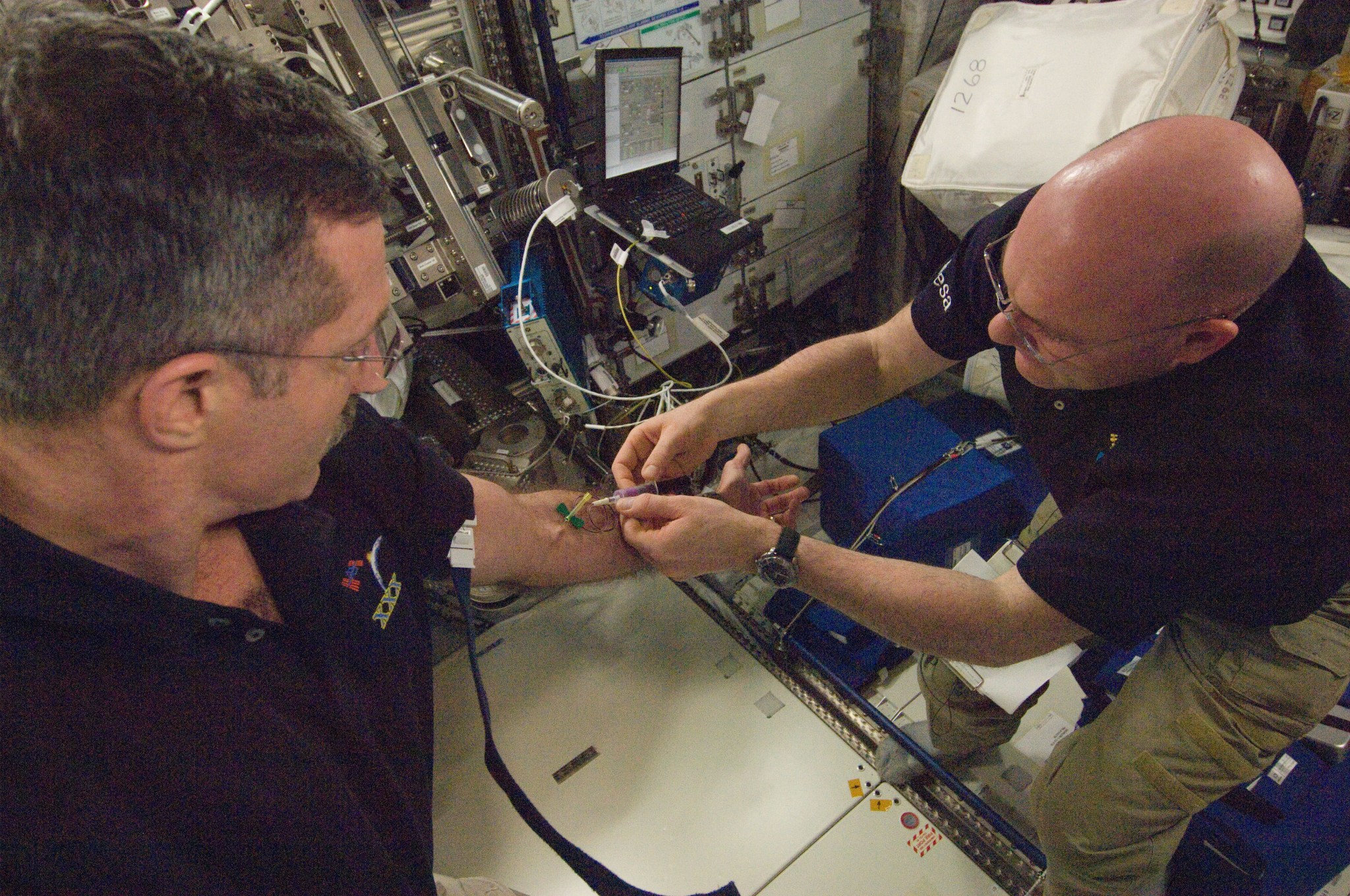
MER1003 Urinalysis (annually)
Test: Standard urinalysis test strip.
Rationale: There currently is no occupational health risk surveillance activity associated with an identified occupational exposure, that requires the information from this test. This screening is a standard of care and is included in the annual LSAH examination. These data are also needed to support Epidemiology’s astronaut surveillance activities for detection of unknown adverse health conditions that may be related to occupational exposures.
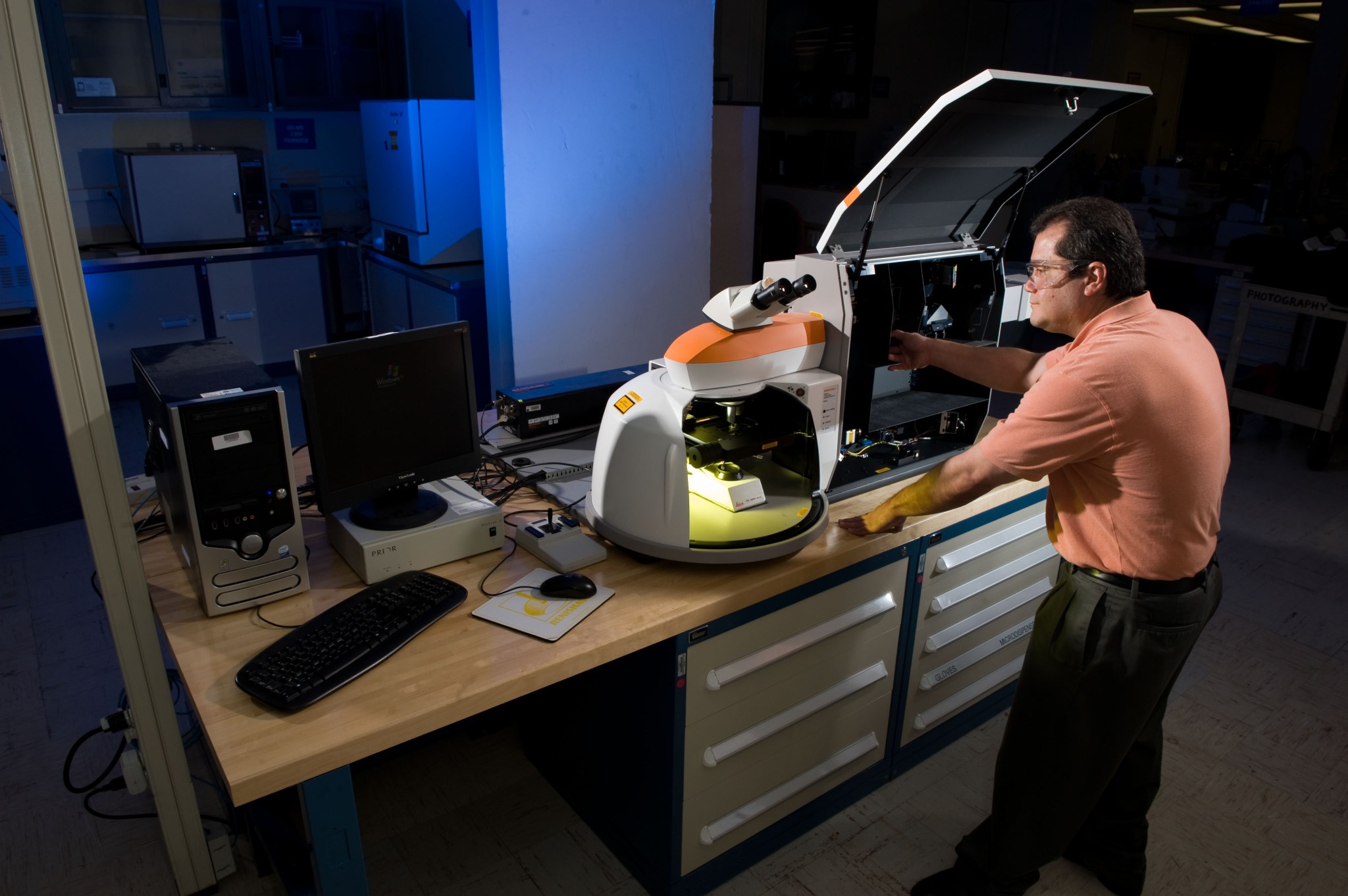
Musculoskeletal
MER2001 Bone Health (Every 3 years)
Test: Dual-energy X-ray absorptiometry (DXA) and bone health serologic markers.
Rationale: CHS manages an astronaut-specific bone health program through the JSC clinic. This aspect of long-term astronaut monitoring is unique to NASA and the astronaut corps. Concerns exist that exposure to the space flight environment (microgravity, space radiation, and elevated CO2 levels) may cause a decrease in bone strength and, thus, an increase in the risk of non-traumatic fractures for astronauts relative to healthy non-astronauts. A major risk to crew health is the change in bone ultimate strength with respect to mechanical loads; it is possible that a fracture may occur from activities that would be unlikely to induce fracture before space flight. From an occupational health perspective, occupational surveillance needs to be conducted throughout the lifetime of astronauts to detect health issues and develop mitigation strategies to reduce the risk.
Dermatology
MER3001 Clinical Evaluation (Annually)
Test: Visual exam of the skin with photo documentation of any abnormalities.
Rationale: Although the difference is not statistically significant, the rate of melanoma skin cancers are 59% higher in astronauts than in a control group. The incidence rate of diagnosed non-melanoma skin cancers appears to be increased post-flight. The incidence of non-melanomas skin cancers is not reported to cancer registries; therefore, the literature regarding its incidence in the general population is limited. Because of the limited documentation, this exam is needed to gather data to better understand the incidence rate in the astronaut population. Participants are referred to a dermatologist when results of the exam indicate the presence of potential skin cancer.
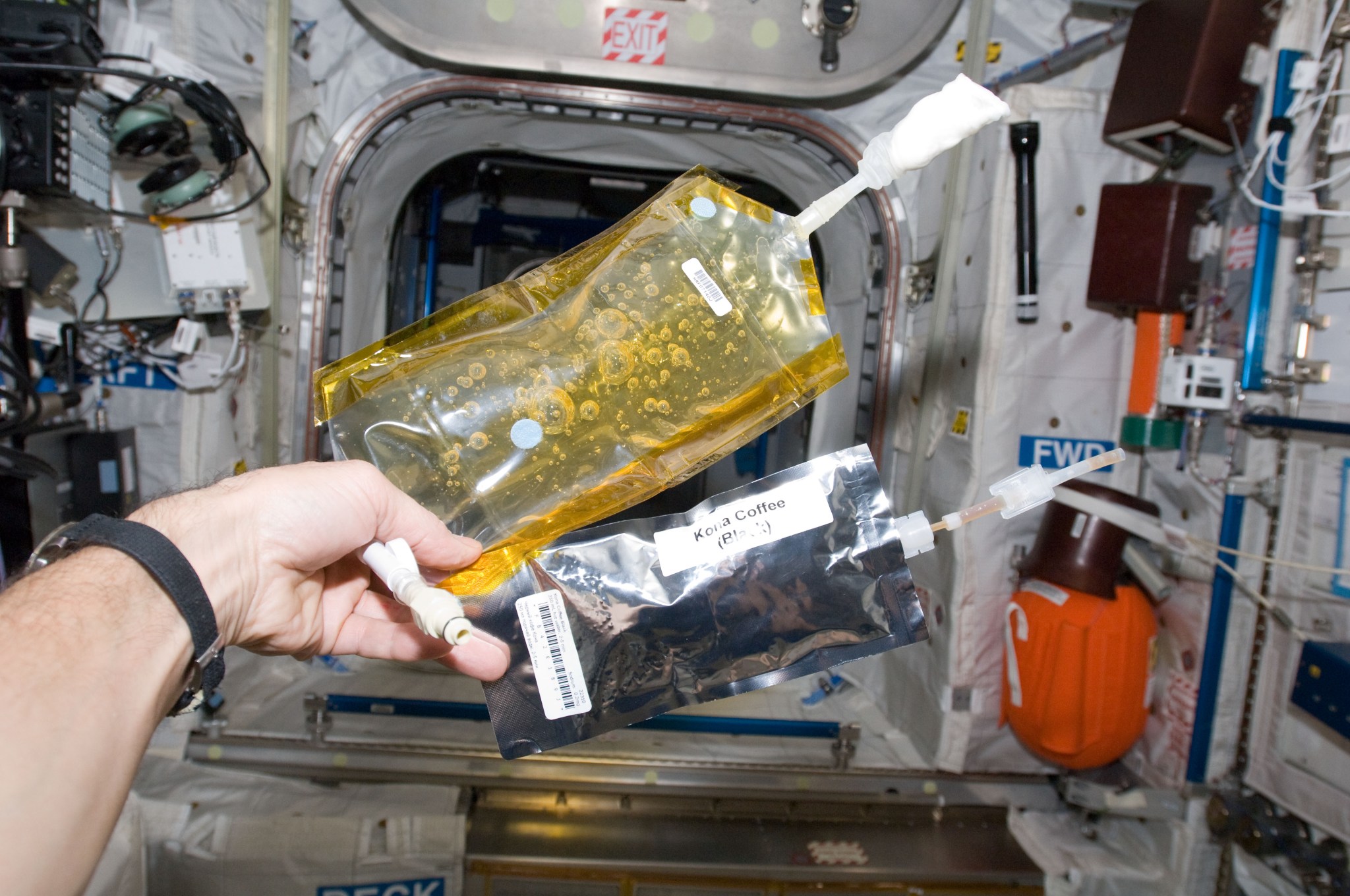
Ophthalmology/Optometry
MER4001 Assessment of Visual Function (Annually)
Test: Visual acuity, color vision, and extraocular muscles.
Rationale: An ophthalmologic examination measures the astronaut’s ocular health and visual status, in order to detect abnormalities in the components of the visual system and to determine how well the person can see. It may also reveal the presence of hypertension, increased intracranial pressure, or diabetes. The lens of the eye is recognized as one of the most radiosensitive tissues in the human body, and it is known that cataracts can be induced by acute doses of less than 2 Gy of lowLET ionizing radiation and less than 5 Gy of protracted radiation. Although much work has been carried out in this area, the exact mechanisms of radiation cataractogenesis are still not fully understood. In particular, the question of the threshold dose for cataract development is not resolved. Cataracts have been classified as a deterministic effect of radiation exposure with a threshold of approximately 2 Gy. Studies indicate the threshold for cataract development is less than was previously estimated, on the order of 0.5 Gy, and that radiation cataractogenesis may, in fact, be more accurately described by a linear, no-threshold model. There appears to be no relationship between radiation exposure and the progression rate of an aggregate area of posterior subcapsular cataract or nuclear cataract. However, longer follow-up is needed to further understand any impact of space radiation on progression rates for these types of cataracts and to characterize changes in visual acuity. Cataract formation rates are being characterized by the Epidemiology group.
MER4002 Refraction Manifest/Cycloplegic (Annually)
Test: Manifest/Cycloplegic refraction test.
Rationale: Refraction tests are used to measure refractive errors (myopia–nearsightedness, hyperopia – farsightedness, and astigmatism), and determine a person’s prescription for eyeglasses or contact lenses. As reported in the postflight exam vision questionnaire, 50 percent of astronauts living on the International Space Station have reported vision changes related to flight. However, long-term effects of vision changes secondary to microgravity are not well understood. From an occupational health perspective, occupational surveillance needs to be conducted throughout the lifetime of astronauts to detect ocular health issues and develop mitigation strategies to reduce the risk.

MER4003 Intraocular Pressure (IOP) (Annually)
Test: Tonometry test
Rationale: Elevated IOP has been observed during parabolic flight and during microgravity exposure. The clinical significance of this rise in IOP in microgravity is unknown. However, it is theorized that a prolonged increase in IOP during space flight could put astronauts at risk for optic nerve damage. Those at risk for glaucomatous optic nerve damage would most likely be those who were exposed to microgravity for months to years. From an occupational health perspective, occupational surveillance needs to be conducted throughout the lifetime of astronauts to detect ocular health issues and develop mitigation strategies to reduce the risk.
MER4004 Ocular Health Assessment – Imaging (Annually)
Test: Dilated fundus exam, retinal photographs, and optical coherence tomography (OCT)
Rationale: There are many concerns related to the ocular system, cephalad fluid shift during microgravity exposure and potential increased intracranial pressure being chief among these concerns. Permanent hyperopic shifts have been documented after long-duration flights. Additionally, optic disc edema, globe flattening, and choroidal folds have been documented in these astronauts. Some individuals experienced transient changes post flight while others have reported persistent changes with varying degrees of severity. The exact cause(s) and long-term effects of these phenomena are not known at this time. From an occupational health perspective, occupational surveillance needs to be conducted throughout the lifetime of astronauts to detect health issues and develop mitigation strategies to reduce the risk.
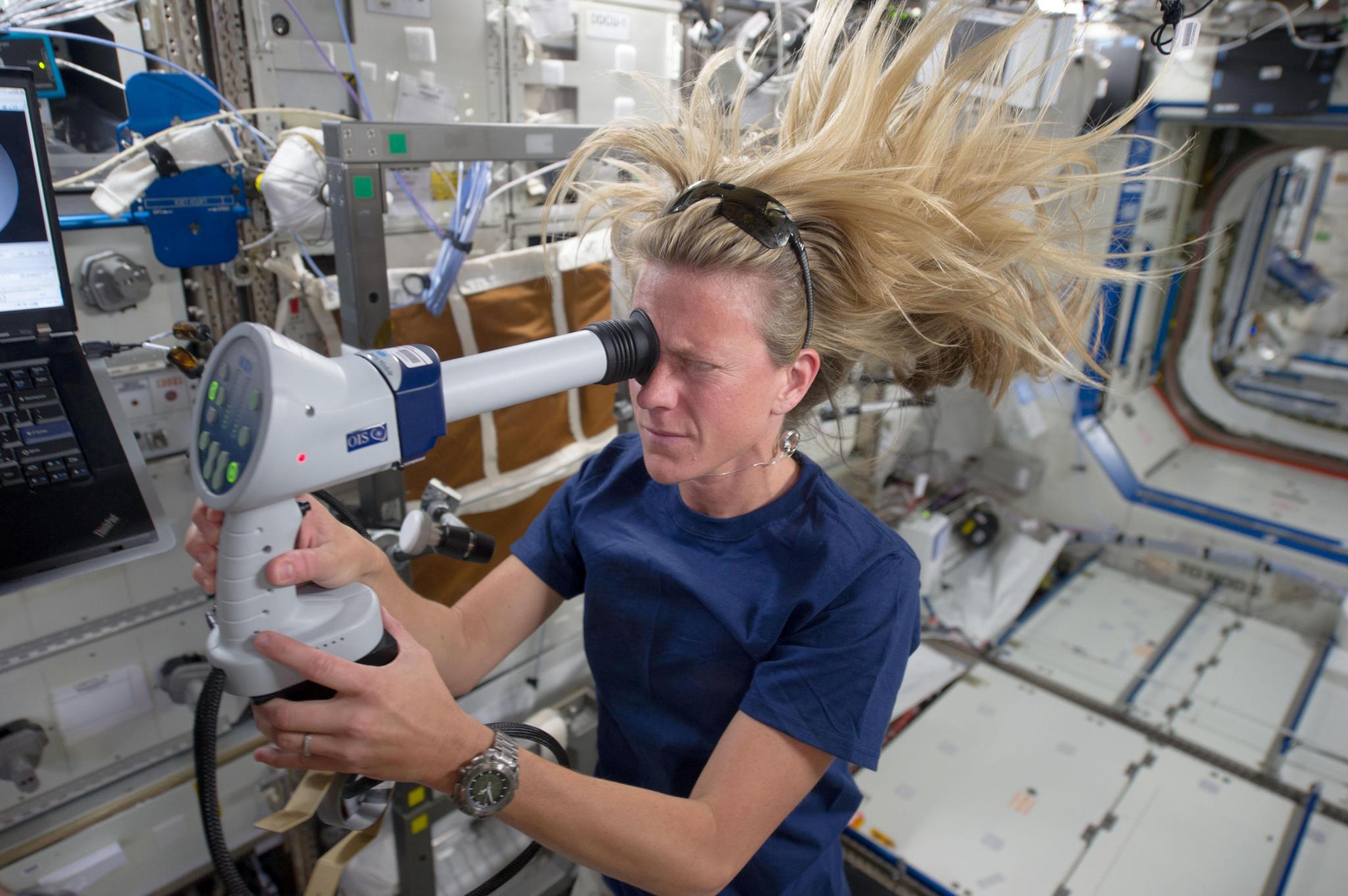
Audiology
MER5001 Clinical Evaluation/Audiometry (Annually)
Test: Hearing questionnaire and pure-tone audiometry test
Rationale: NASA is concerned about strategies to assess and reduce acute, chronic, and delayed effects of hearing loss due to terrestrial (ground-based) and space flight noise exposures experienced by astronauts. There is a significant concern about synergistic interactions between noise, vibration, workload, and comorbidity factors of radiation, toxicology, and microgravity on auditory status. The long-term effects of these occupational exposures are unknown. A hearing questionnaire and pure-tone audiometry test can also help identify progressive changes in auditory function that warrant additional diagnostic evaluations or treatment. As a result, annual audiometric tests will continue to be included as part of the annual exams.
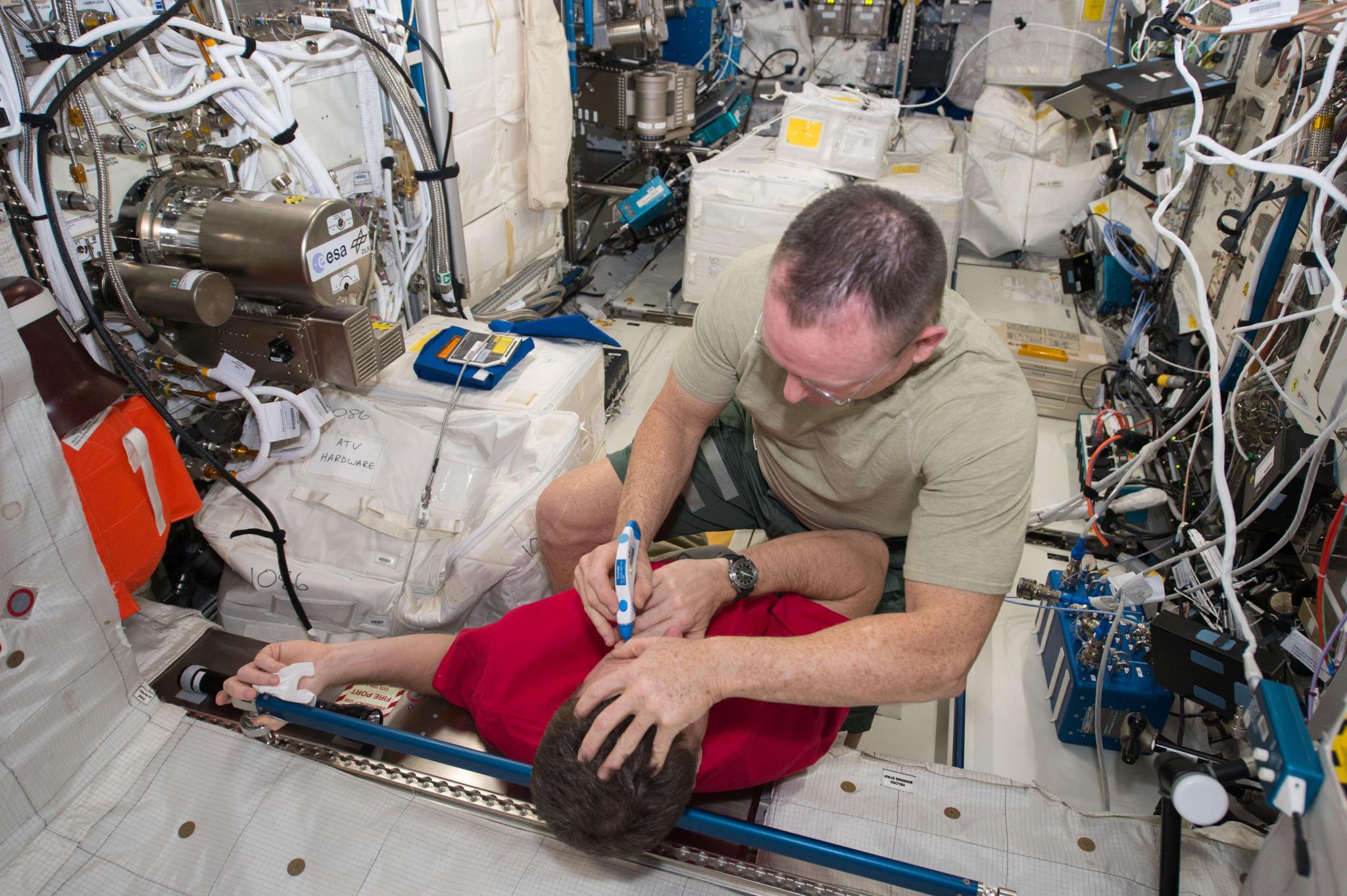
Cardiopulmonary
MER6001 Hypertension Screening (annually and as clinically indicated)
Test: Hypertension screening using a sphygmomanometer.
Rationale: This screening is based on the United States Preventative Services Task Force (USPSTF) guidelines. There currently is no occupational health risk associated with hypertension. This screening is a standard of care and is included in the annual Lifetime Surveillance of Astronaut Health examination. These data are also needed to support Epidemiology’s astronaut surveillance activities for detection of unknown adverse health conditions that may be related to occupational exposures. USPSTF Guideline: The USPSTF recommends screening for high blood pressure in adults aged 18 and older.
MER6002 Resting 12-lead ECG (Annually)
Test: Resting 12-lead electrocardiogram.
Rationale: There are concerns that astronauts may have subclinical cardiac abnormalities that could be exacerbated by the adaptive responses of the cardiovascular system to microgravity. Currently, the long-term effect of these adaptive responses is not known. This test is required to obtain the data needed to determine whether exacerbation of subclinical cardiac abnormalities is a valid long-term impact of occupational exposure to space flight. Knowing this may have implications for long-duration space missions in the future.
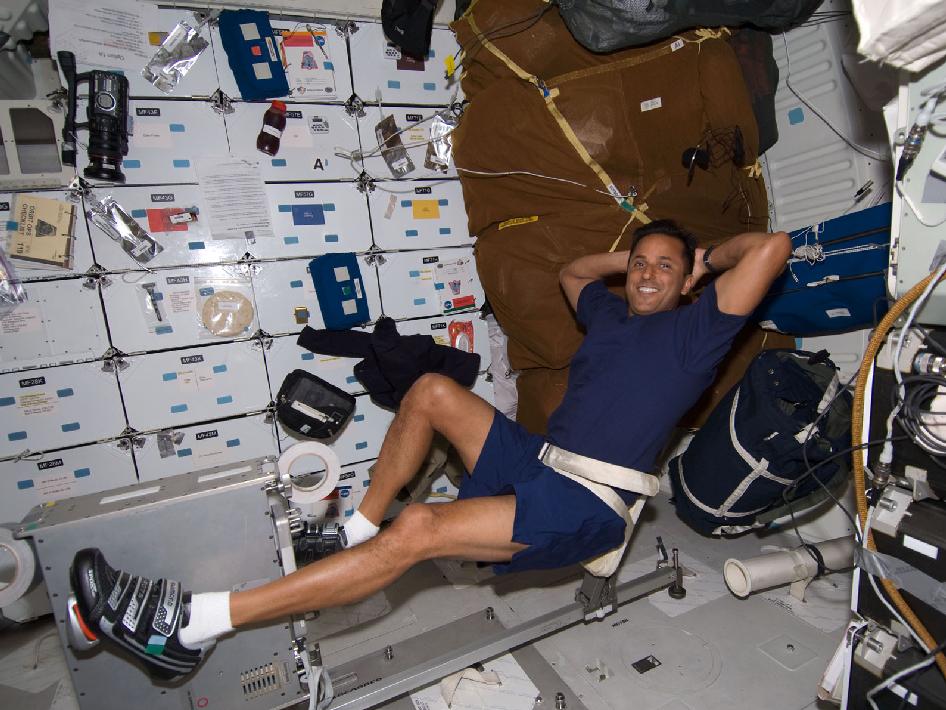
MER6003 Cardiovascular Health Screening (Annually)
Test: Cardiovascular health screening.
Rationale: The cardiovascular health screening documents cardiovascular risk factors (blood pressure, age, gender, cholesterol, smoking status) and includes CIMT calculation. These risk factors are used to calculate a Framingham Risk Score. The Framingham Risk Score is a gender-specific algorithm used to estimate the 10-year cardiovascular risk of an individual. Astronauts may have subclinical cardiac abnormalities that could be exacerbated by the adaptive responses of the cardiovascular system to microgravity and exposure to space radiation. We do not currently know the long-term effect of these adaptive responses. This test is required to obtain the data needed to determine whether exacerbation of subclinical cardiac abnormalities is a valid long-term impact of occupational exposure to space flight. Knowing this may have implications for long-duration space missions in the future.
Gastroenterology
This medical exam is done as clinically indicated.
Reproductive Health
This medical exam is done as clinically indicated.
Behavioral Health
This medical exam is done as clinically indicated.



























